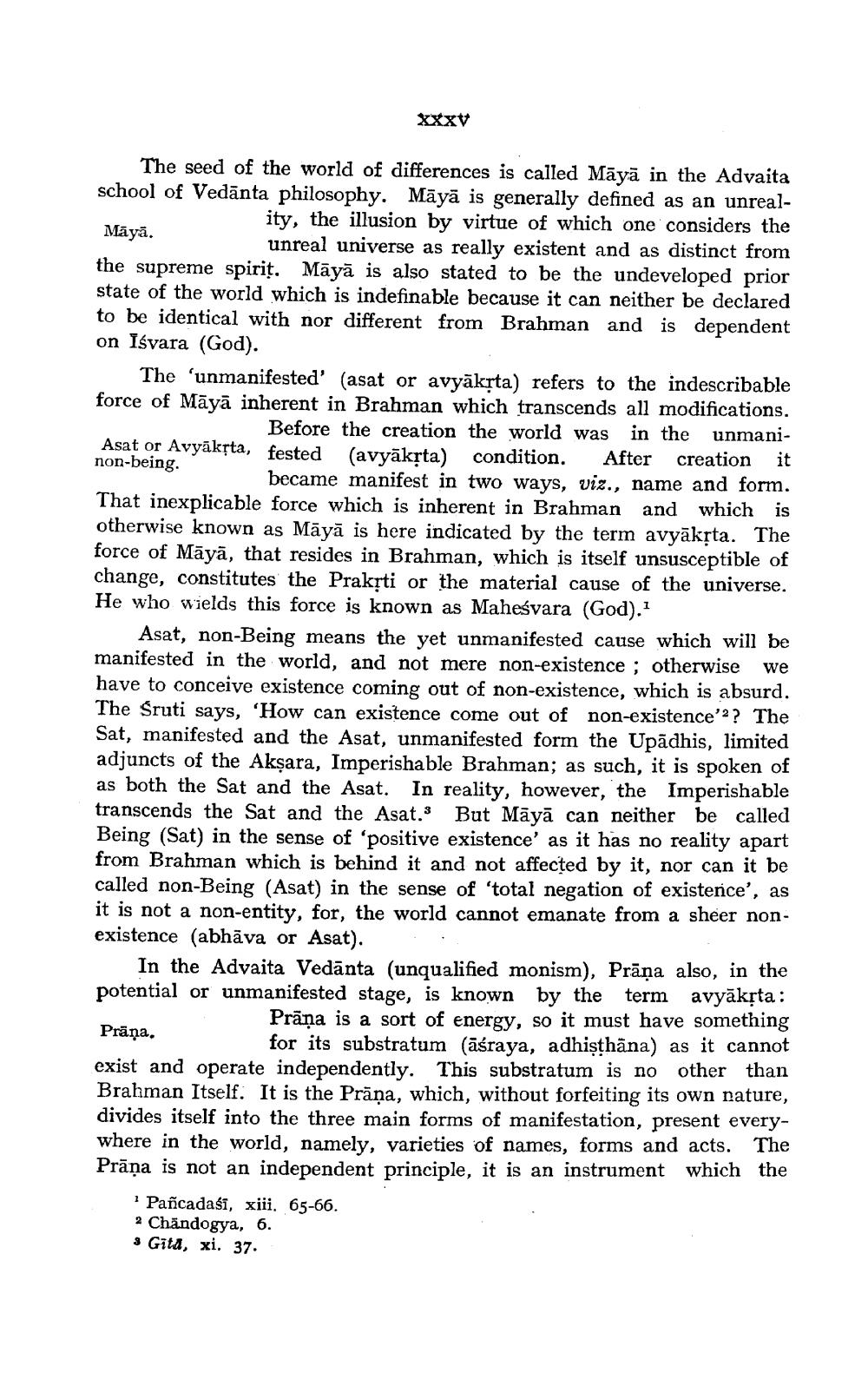________________
The seed of the world of differences is called Māyā in the Advaita school of Vedānta philosophy. Māyā is generally defined as an unreal
ity, the illusion by virtue of which one considers the Māyā.
unreal universe as really existent and as distinct from the supreme spirit. Māyā is also stated to be the undeveloped prior state of the world which is indefinable because it can neither be declared to be identical with nor different from Brahman and is dependent on Isvara (God).
The 'unmanifested' (asat or avyākrta) refers to the indescribable force of Māyā inherent in Brahman which transcends all modifications.
Before the creation the world was in the unmaniAsat or Avyāksta, fested (avyäkrta) condition. After creation it non-being.
became manifest in two ways, viz., name and form. That inexplicable force which is inherent in Brahman and which is otherwise known as Māyā is here indicated by the term avyāksta. The force of Māyā, that resides in Brahman, which is itself unsusceptible of change, constitutes the Prakrti or the material cause of the universe. He who wields this force is known as Maheśvara (God).
Asat, non-Being means the yet unmanifested cause which will be manifested in the world, and not mere non-existence; otherwise we have to conceive existence coming out of non-existence, which is absurd. The Sruti says, 'How can existence come out of non-existence'?? The Sat, manifested and the Asat, unmanifested form the Upādhis, limited adjuncts of the Aksara, Imperishable Brahman; as such, it is spoken of as both the Sat and the Asat. In reality, however, the Imperishable transcends the Sat and the Asat.3 But Māyā can neither be called Being (Sat) in the sense of 'positive existence' as it has no reality apart from Brahman which is behind it and not affected by it, nor can it be called non-Being (Asat) in the sense of 'total negation of existence', as it is not a non-entity, for, the world cannot emanate from a sheer nonexistence (abhāva or Asat).
In the Advaita Vedānta (unqualified monism), Prāna also, in the potential or unmanifested stage, is known by the term avyāksta:
Prāna is a sort of energy, so it must have something Prāņa.
for its substratum (āśraya, adhişthāna) as it cannot exist and operate independently. This substratum is no other than Brahman Itself. It is the Prāna, which, without forfeiting its own nature, divides itself into the three main forms of manifestation, present everywhere in the world, namely, varieties of names, forms and acts. The Prāna is not an independent principle, it is an instrument which the
? Pañcadaśī, xiii. 65-66. 2 Chandogya, 6. 3 Gita, xi. 37




